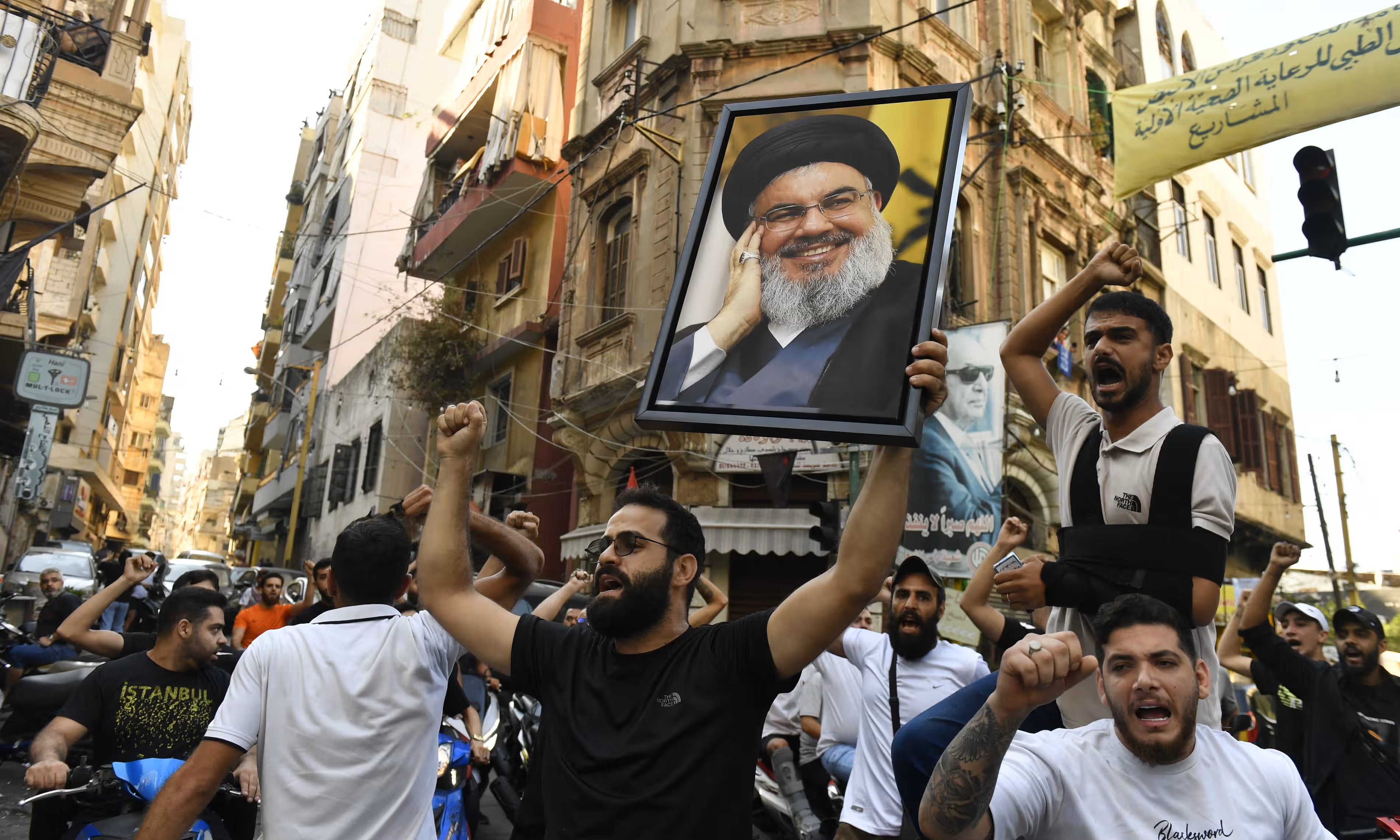Who is Hezbollah leader Hassan Nasrallah?
Hezbollah Secretary-General Hassan Nasrallah, who was killed in an Israeli military attack in Lebanon’s Dahiya region on Friday evening, was one of the most well-known and influential figures in the Middle East.

The Israeli military announced that Hezbollah leader Nasrallah was killed in an attack on Hezbollah’s headquarters on Friday evening. Nasrallah, 64, led Hezbollah for 32 years after his predecessor Abbas al-Musawi was killed by Israel in 1992. His charismatic leadership and political acumen made him one of the most influential figures in Lebanon and the Middle East.
Nasrallah, who has close personal and political connections to Iran, played a key role in Hezbollah’s transformation into the political and military power it is today. Nasrallah continues to be seen as a charismatic leader by the group’s supporters.
Hassan Nasrallah (31 August 1960 – 27 September 2024) was a Lebanese cleric and the secretary-general of Hezbollah, a Shia Islamist political party and militant group.
Under Nasrallah’s leadership, Hezbollah helped train militants in Iraq and Yemen, as well as the Palestinian armed group Hamas and obtained missiles and rockets from Iran for use against Israel.
Joined the Amal Movement
He guided Hezbollah’s transformation from a militia established to fight Israeli forces occupying Lebanon to a military force stronger than the Lebanese army, a center of gravity in Lebanese politics, a major provider of health, education and social services, and a key part of Iran’s bid for regional supremacy.
His family fled Beirut when the Lebanese Civil War broke out in 1975. Nasrallah later joined the Shiite social movement Amal, an ally of Iran and Syria, and at the age of 16, he went to Najaf, Iraq, to receive religious training.
He rejoined Amal in Lebanon before he and others left the group shortly after Israel invaded Lebanon in 1982.
He became the leader of Hezbollah at the age of 32
The new group, Islamic Amal, received significant military and organizational support from the Iranian Revolutionary Guard Corps in the Bekaa Valley and emerged as the most prominent and influential of the Shiite militias that would later form Hezbollah.
In 1985, Hezbollah officially announced its founding by publishing an “open letter” that described the United States and the Soviet Union as the arch-enemies of Islam and called for the “destruction” of Israel, which it said had occupied Muslim lands.
Nasrallah rose through the ranks of Hezbollah as it grew. Hezbollah became its leader in 1992 at the age of 32, after his predecessor Abbas al-Musawi was killed in an Israeli helicopter strike.
One of his first actions was to retaliate for Mousawi’s killing.
He led the war that resulted in Israel's withdrawal from southern Lebanon
Nasrallah also fought a low-intensity war with Israeli forces, which ended with Israel's withdrawal from southern Lebanon in 2000.
During this time, his eldest son, Hadi, was killed in a clash with Israeli troops.
Following the withdrawal, Nasrallah declared that Hezbollah had won its first Arab victory over Israel. Nasrallah also promised that Hezbollah would not disarm and said that he believed that "all Lebanese territory must be reclaimed."
He escaped unharmed in 2006
Following this period, there was a period of relative calm until 2006. However, a major conflict was triggered when Hezbollah militants killed 8 Israeli soldiers and kidnapped 2.
In the 2006 conflict, Israeli warplanes bombed Hezbollah’s southern strongholds and the southern suburbs of Beirut, while Hezbollah fired an estimated 4,000 rockets into Israel. More than 1,125 Lebanese, mostly civilians, as well as 119 Israeli soldiers and 45 civilians were killed in the 34-day conflict.
Nasrallah’s home and offices were targeted by Israeli warplanes, but he escaped unharmed.
New political manifesto: Sends fighters to Syria
In 2009, Nasrallah released a new political manifesto aimed at emphasizing Hezbollah’s “political vision.” It maintained a tough stance against Israel and the United States and reiterated that Hezbollah should continue to possess weapons despite a UN resolution banning them in southern Lebanon.
Four years later, Nasrallah declared that Hezbollah had entered a “completely new phase” of its existence by sending fighters to Syria to help its Iranian-backed ally, President Bashar Assad, quell an uprising.
Protests in Lebanon
In 2019, Lebanon’s deep economic crisis triggered mass protests against a political elite long accused of corruption, waste, mismanagement and neglect. Nasrallah initially expressed sympathy for the calls for reform, but his stance changed as protesters began calling for a complete overhaul of the political system.
After October 7
On October 8, 2023, the day after Hamas’ unprecedented attack on Israel that triggered the war in Gaza, the clashes between Hezbollah and Israel escalated.
Hezbollah has opened fire on Israeli positions in solidarity with the Palestinians.
In a speech in November, Nasrallah said the Hamas attack was “100 percent Palestinian, both in its decision and its execution,” but that the exchange of fire with Israel was “very important and significant.”
In his latest speech, Nasrallah accused Israel of killing 39 people and injuring thousands of others by detonating thousands of pagers and radios used by Hezbollah members, saying that this “crossed all red lines.” He acknowledged that the group had suffered an “unprecedented blow.”
